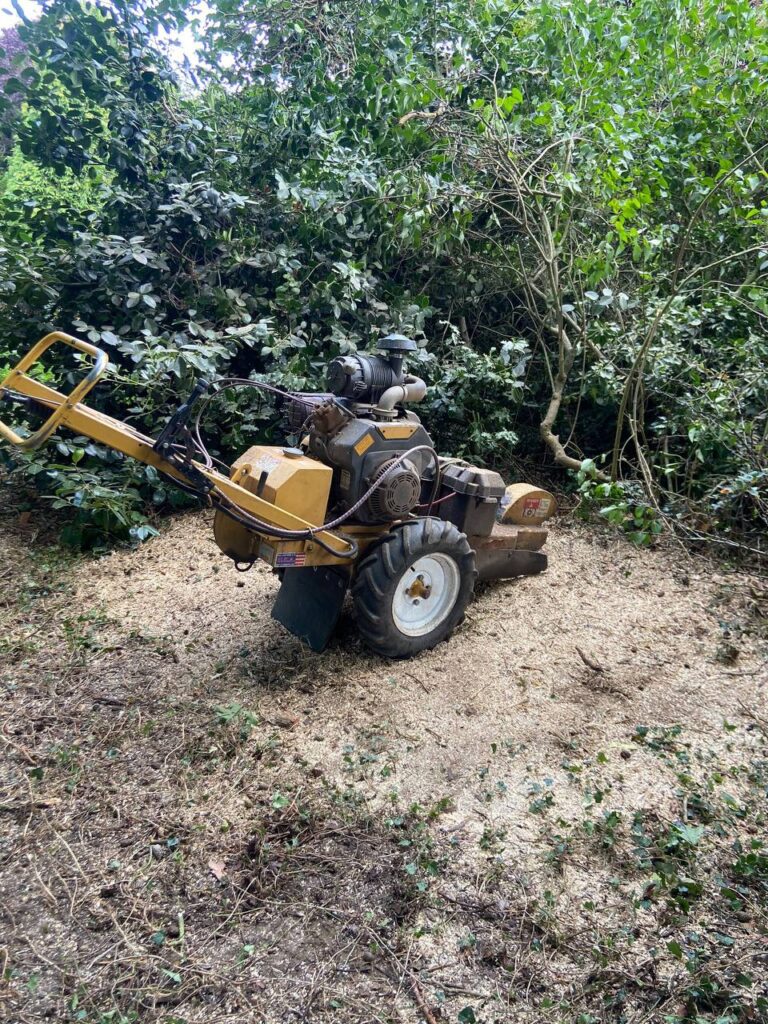Trees are often seen as strong and self-sustaining, but beneath the bark, hidden problems can pose serious risks to people, property, and the health of the tree itself. Structural damage isn’t always visible to the untrained eye. Cracks, decay, weak branch unions, and root instability can all develop silently over time. At Tamworth Tree Surgeons, we work with property owners throughout Tamworth, Staffordshire to identify these hidden dangers and ensure trees are both safe and thriving.
Whether you own a mature specimen in your garden or manage a row of trees on a commercial property, understanding the signs of structural damage—and knowing when to call in a professional—can make all the difference.
What Is Structural Damage in a Tree?
Structural damage refers to defects or weaknesses in the physical framework of a tree that compromise its stability and safety. This includes issues in:
- The trunk (cracks, cavities, decay)
- Branch attachments (poor unions, split limbs)
- The root system (root plate movement, girdling roots)
These problems often go unnoticed until severe weather exposes them, or until failure causes damage or injury.
Signs Your Tree May Be Hiding Structural Damage
Even healthy-looking trees can have hidden issues. A professional tree surgeon will look for the following:
1. Cracks and Splits
- Vertical or horizontal cracks in the trunk or major limbs
- Splits in branch junctions where water may collect
- “Included bark” (when bark grows between two branches, weakening the union)
Cracks weaken the structural integrity and can lead to sudden limb drop or trunk failure.
2. Cavities and Hollow Trunks
- Large holes or hollow sections inside the trunk
- Woodpecker activity may indicate internal decay
- A hollow trunk may still support foliage, masking the risk
These often result from previous injury, storm damage, or fungal decay.
3. Dead or Dying Branches
- Sudden dieback in major limbs
- Leafless branches in the growing season
- Brittle, easily snapped wood
Deadwood not only poses a falling risk but may indicate deeper systemic issues.
4. Fungal Growth and Decay
- Presence of mushrooms or fungal brackets at the base or on the trunk
- Discoloured, soft, or crumbling wood
- Fruiting bodies such as Ganoderma or Armillaria (honey fungus)
Fungi often indicate advanced internal decay or root problems that undermine the tree’s strength.
5. Root Movement or Instability
- Soil cracking or mounding at the base of the tree
- Visible leaning that appears to worsen
- Roots growing in circles around the base (girdling roots)
Root issues are particularly dangerous because they affect the tree’s anchor. Many failures in high winds are due to unseen root plate failure.
What a Tree Surgeon Looks for During Inspection
At Tamworth Tree Surgeons, we use a combination of visual assessment, manual testing, and where necessary, non-invasive diagnostic tools. During an inspection, we assess:
- The overall balance and symmetry of the canopy
- Signs of stress or early leaf drop
- Attachment points of large limbs (especially in multi-stemmed trees)
- The condition of the trunk and bark for decay, swelling, or insect activity
- Ground conditions and signs of poor drainage or compaction
If needed, we may recommend further investigations such as decay detection using a resistograph, or air spading to examine roots.
Why Structural Damage Must Be Taken Seriously
A tree with hidden structural damage is a liability—especially in urban or suburban environments like Tamworth, Staffordshire where trees overhang roads, gardens, or buildings.
Risks include:
- Sudden limb or tree failure in high winds
- Property damage from falling branches
- Injury to pedestrians or household occupants
- Legal liability for negligence if issues were known and ignored
Timely intervention not only keeps people and property safe but often helps preserve the tree by addressing the problem before it worsens.
What Can Be Done?
Once structural damage is identified, there are several possible actions:
Tree Pruning
- Reduces the weight and wind load on vulnerable limbs
- Improves balance and removes weak or rubbing branches
- Encourages healthier, safer growth patterns
Bracing or Cabling
- Provides mechanical support between key limbs or stems
- Used for historic or valuable trees that cannot be reduced
- Requires regular monitoring by a qualified arborist
Root Management
- Removal of girdling roots where safe to do so
- Improving drainage and aeration
- Careful mulching and protection of the root zone
Tree Removal (if necessary)
- In cases of severe decay or instability
- Carried out with safety, minimal disruption, and proper waste management
- We can advise on suitable replacement planting
Why Choose Tamworth Tree Surgeons?
We’re committed to the safety, health, and longevity of trees across Tamworth, Staffordshire. Our team offers:
- In-depth tree assessments and structural inspections
- Honest, expert advice on the safest course of action
- Skilled tree surgery tailored to the condition and species
- Full compliance with British Standards (BS 3998)
- Tree preservation advice and support for applications if needed
We pride ourselves on clear communication, responsible tree care, and protecting both people and the natural environment.
Conclusion
Trees may look healthy from the outside but still be hiding serious structural issues beneath the surface. Early signs of cracking, decay, deadwood, or root instability can be difficult to detect without a trained eye. If you suspect your tree might be showing subtle signs of stress or if you want peace of mind about its condition, don’t wait for the next storm to find out. Contact Tamworth Tree Surgeons for a thorough assessment anywhere in Tamworth, Staffordshire. We’ll help you uncover hidden problems and take proactive steps to ensure your trees remain safe, stable, and beautiful for years to come.
Call us on: 01827 214 496
Click here to find out more about Tamworth Tree Surgeons
Click here to complete our contact form and see how we can help with your trees needs.

